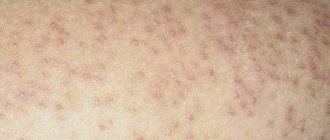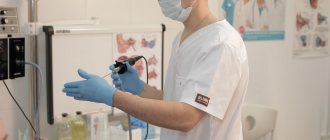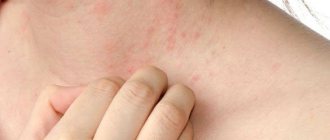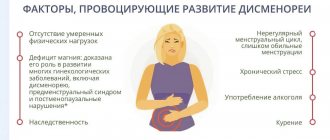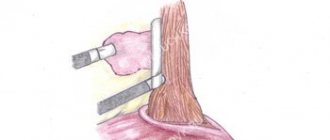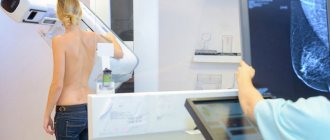Eczema is the name of a large group of chronic skin diseases of a neuro-allergic nature. It can occur in acute, subacute or chronic form, which is characterized by alternating periods of exacerbations and remissions. Skin lesions can be observed on different parts of the body. In most patients, the disease affects the arms: fingers, palms, hands and forearms. Treatment of eczema on the hands requires special attention, since when the disease is advanced, it causes difficulty in performing even the simplest tasks.
Causes of eczema on hands
The nature of eczema is still not fully understood. It is not known exactly for what reasons it occurs, but the leading role in development is given to heredity and allergic reactions. If parents or close relatives have the disease, then there is a high probability of its occurrence in the child, and at any age.
There are a lot of factors that provoke the first symptoms of the disease. Hormonal eczema on the hands occurs when hormones are imbalanced. The disease can also be caused by other internal factors:
- helminth infection;
- diseases of the digestive system;
- long-term use of medications;
- severe nervous shock;
- lack of vitamins and microelements;
- consumption of allergenic foods;
- past infections.
Fungal eczema on the hands develops against the background of infection of the body by a fungus. There is also a viral form of the disease. It can also be provoked not only by internal, but also by external factors. What causes eczema on the hands in this case:
- frequent contact with irritants (household chemicals, aggressive chemicals);
- wearing synthetic clothing;
- contact with pollen, animal hair, dust;
- exposure to extreme cold;
- Constant work with water (hands are often wet).
General approaches to the treatment of eczema in the practice of an internist
Eczema is a common skin disease, represented by a polymorphism of morphological elements, which is formed as a result of a complex set of etiological and pathogenetic factors. The disease appears at any age, often occurs acutely, less often there are chronic forms. This dermatosis accounts for 30–40% of all skin pathology. Eczema is a polyetiological disease caused by a combination of exogenous and endogenous factors, and is also associated with allergic, metabolic, neurogenic processes, endocrine, and gastrointestinal disorders. Exogenous are chemical, biological, bacterial, physical factors. Drugs, food products, cosmetics and household chemicals are important for the development of the disease.
Eczema is determined by the presence of grouped vesicular elements, when opened, serous “wells” are formed, resembling “bubbles of boiling water.” Dermatosis has been known since the 2nd century BC. e.
Allergic reactivity is of greatest importance in the development of this dermatosis and represents monovalent and polyvalent sensitization. Often the allergic reaction develops as a delayed type, sometimes it occurs as an immediate-delayed one. For the development of an antigen-antibody reaction, a certain humoral environment is required, a change in homeostasis, the presence of immune shifts, a change in the function of prostaglandins and cyclic nucleotides (A. A. Kubanova). Changes in the immune response are determined by the regulation of prostaglandins and cyclic nucleotides and contribute to the development of allergic reactivity and the formation of an eczematous process. This process characterizes the degree and severity of the clinical manifestations of the disease.
The formation of prerequisites for the occurrence of eczema is determined by the presence of a genetic predisposition and factors contributing to the development of an immediate-delayed type reaction. An increase in the content of the thyroid hormone, thyrocalcitonin, has been proven, stimulating the activity of prostaglandins and cyclic nucleotides, which is a compensatory reaction of the body (A. A. Kubanova). In the presence of eczema, there are disorders of the central nervous system, with the activity of the parasympathetic nervous system predominating over the sympathetic, unconditioned reflexes over conditioned ones, and increased sensitivity of skin receptors. Increased permeability of vascular walls is promoted by pituitary-adrenal insufficiency and increased sensitivity of smooth muscle cells. The presence of bacterial and microbial antigens, immune deficiency, a combination of exogenous and endogenous factors influence the development of chronic inflammation in the dermis and epidermis and the formation of immune complexes and the appearance of autoantibodies. Pathological changes in various organs and systems, chronic inflammation in the dermoepidermal area stimulate the development of eczema.
Currently, there is no uniform classification of eczema. For example, one of the classifications represents the following forms of eczema: acute, subacute, chronic.
Yu. K. Skripkin proposed the following classification:
- true eczema, which includes pruriginous and dyshidrotic;
- microbial eczema, which includes nummular, varicose, paratraumatic, sycosiform, nipple eczema, seborrheic, childhood, occupational, mycotic, tilotic eczema.
True eczema is determined by the presence of erythema, against which vesicles and microvesicles, papules, and pustules develop. This eczema is characterized by a polymorphism of rashes, accompanied by an acute inflammatory reaction, infiltration of skin areas, excoriations and the presence of severe itching. When the elements are opened, areas of weeping with exudative crusts, maceration of the skin, scales, fragments of the epidermis and horny layers are formed.
The transition of acute to chronic eczema is determined by the presence of pronounced tissue infiltration, the transition of active hyperemia to chronic, the formation of lichenification, and constant itching.
Pruriginous eczema is characterized by the presence of papulovesicular elements on a compacted base on the extensor surfaces of the limbs, elbows, popliteal areas, face, and inguinal folds. The elements do not open and do not become wet. The disease is chronic and accompanied by severe itching. In this case, dryness, lichenification, cracks, thickening, peeling, and pigmentation of the skin appear.
Pruriginous eczema is accompanied by changes in the nervous system (sleep disturbance, severe neurotic reactions). In childhood, the disease is combined with bronchial asthma and has persistent white dermographism due to the involvement of the parasympathetic nervous system.
Dyshidrotic eczema is determined by the appearance in the palms, soles, and on the lateral surfaces of the fingers of small vesicular elements, dense on palpation, grouped, characterized by the presence of peeling skin, cracks in the palms. The disease is accompanied by severe itching, weeping, the presence of hemorrhagic and yellowish crusts, and has clear boundaries.
Microbial eczema - develops as sensitization to a microbial antigen (streptococcus, staphylococcus) against the background of changes in the neuroendocrine and immune systems, dysfunction of the gastrointestinal tract.
The disease is an asymmetrical process on the skin of the legs, the dorsum of the hands, the lateral surfaces of the torso, and the scalp. The lesions have a clear boundary and are represented by microvesicles, pustules against a background of erythema, infiltration, purulent and yellowish crusts, and peeling. The rashes often spread to all the skin, where serous-purulent or hemorrhagic crusts appear. When the crusts are removed, the surface presents with erosions, bleeding easily, with serous effusion. The process is accompanied by severe itching and pain on palpation.
Nummular eczema (coin-shaped) - is defined by erythematous scaly elements of a round shape, with pronounced exudation, infiltration, the presence of papules, pustules, micropustules, oozing, yellowish, hemorrhagic crusts on the skin. When the process spreads to healthy areas of the skin, papules, papulovesicles, and erythematous spots are formed, which are accompanied by severe itching.
Often the development of microbial eczema is associated with foci of chronic infection (cholecystitis, adnexitis, ENT pathology), parasitic diseases (helminthiasis, giardiasis, enterobiasis, etc.).
Paratraumatic eczema - develops against the background of vascular pathology and in the presence of a focus of infection, in the area of postoperative scars, with bone fractures, osteosynthesis. In this case, erythematous, infiltrative changes appear in the peri-wound area, more often in the presence of edema, with the release of exudate and the formation of yellowish-hemorrhagic crusts. Superficial sclerosis of the skin and deposition of hemosiderin in tissues are possible.
Hypostatic eczema (varicose) - associated with severe vascular pathology of the lower extremities, varicose veins, trophic changes in tissue, trophic ulcers, edema. Vesicular-pustular elements appear on the skin against the background of erythema, infiltration, and serous-purulent crusts form. The disease is accompanied by itching. Foci of sclerosis also form. Differential diagnosis is carried out with erysipelas, pretibial myxedema.
Sycosiform eczema - occurs in the presence of sycosis or with a predisposition to ostiofolliculitis. The process is localized not only on the face, but also in places of increased hair growth (pubic, axillary areas, etc.). Against the background of hyperemia and infiltration, papules and multiple pustules appear, peeling and weeping appear, which leads to the formation of crusts. The disease is chronic, often relapsing.
Eczema of the nipples - with minor infiltration or against the background of severe hyperemia, pustulization develops, erythematous plaques and peeling appear, then, in the presence of weeping, crusts and cracks with bloody-serous discharge form. Differential diagnosis is carried out with Paget's disease, streptostaphyloderma, seborrheic eczema.
Seborrheic eczema is determined by its location on the scalp, chest, back, interscapular, postauricular area, nasolabial fold. The disease is characterized by the presence of yellowish-pink erythematous spots, with infiltration, fine-plate peeling, and yellow scales. Serous-purulent exudation is possible, sebum secretion is increased, and serous-purulent crusts are formed. In the area of the scalp, the hair is glued together with exudate, there are scales, crusts, and pronounced infiltration. Differential diagnosis is carried out with psoriasis, lichen asbestos, mycotic lesions, pyoderma.
Children's eczema - appears both independently and against the background of atopic dermatitis. The disease develops at an early age. According to statistics, childhood eczema accounts for 13% to 29% of all skin diseases (F.A. Zverkova).
The most common localization is the face, cheek area, scalp, buttocks, hands, legs, and abdomen. Erythematous spots, infiltrative areas with exudative papules, pustules, vesicles and microvesicles form on the skin. The rapid formation of yellowish, brown, hemorrhagic crusts, with oozing, fine-plate and large-plate peeling is possible. When removing or scratching the crusts, eroded areas of the skin appear. In the presence of weeping, erythematous-spotty seborrheic lesions form on the limbs, torso, and face. Purulent-hemorrhagic crusts often appear against the background of severe infiltration, accompanied by biopsied itching.
The disease is a combination of seborrheic, microbial, true eczema. Often a combination of childhood eczema with bronchospasm, bronchitis with an asthmatic component, hay fever, and allergic conjunctivitis.
Most close relatives or parents had allergic diseases. Genetic predisposition depends on the presence of an immune response gene, a positive association of histocompatibility system antigens. At the same time, with an increase in the synthesis of prostaglandins and an imbalance of prostaglandin F2a, a decrease in prostaglandin E, the production of histamine and serotonin is activated, which contribute to the development of an allergic reaction, the appearance of inflammation, and an increase in the permeability of the vascular wall (A. A. Kubanova).
The anamnesis reveals the presence of toxicosis during pregnancy, irrational nutrition, nervous stress, chronic diseases of the mother (pyelonephritis, nephropathy, hepatitis, cholecystitis, diabetes mellitus, foci of chronic infection, diseases of the nervous system). Also important for the spread of the process and its progression are disorders of the gastrointestinal tract (excesses and dyskinesia of the gallbladder, changes in the pancreas, hepatitis). It is necessary to examine children for carriage of helminthic infestations and enterobiasis.
When determining the immune status, immune deficiency and the presence of antibodies to staphylococcal and streptococcal antigens are revealed (F.A. Zverkova).
The most common forms of eczema in childhood are true eczema, seborrheic, microbial, and dyshidrotic. Differential diagnosis must be made with atopic dermatitis, psoriasis, contact dermatitis, streptostaphyloderma, toxicoderma, mycotic skin lesions, prurigo, and Dühring's dermatitis herpetiformis.
Occupational eczema - develops in the presence of industrial allergens (chemical, bacteriological, etc.) and a change in the allergic reactivity of the body.
Professional allergens are amine hardeners, synthetic adhesives, paraphenylenediamine, dinitrochlorobenzene, epoxy resins, phenol-formaldehyde, penicillin and semi-synthetic antibiotics, heavy metal salts, turpentine and its derivatives, mercury compounds, alloys of precious and semi-precious metals, etc.
With occupational eczema, a delayed reaction develops to a substance that is used in production and is an occupational allergen. At the same time, an occupational disease does not develop in all workers of the enterprise, but when the reactivity of the body changes. The inflammatory process manifests itself after a certain period of time with constant contact with substances. Cross-sensitization is possible when exposed to multiple occupational allergens. Workers in metallurgical plants, chemical plants, pharmaceutical and food industries are most susceptible to developing occupational eczema.
The clinical picture of occupational eczema is quite varied. Erythema with infiltrative tissue changes, edema, papulopustular rashes, serous-exudative crusts, oozing, and erosions develop on the skin. The process is accompanied by severe itching. Occupational eczema is often complicated by the addition of a pyogenic infection, which aggravates the course of the disease, promotes the formation of purulent, hemorrhagic crusts, the spread of pustules, vesicles, which tend to open and form weeping areas with serous effusion, vesicular and cystic elements. In this case, lymphadenitis and lymphangitis develop, and body temperature rises. The clinical picture of the disease depends on the degree of allergic reactivity. When the etiological factor disappears, the disease resolves quite quickly.
Occupational eczema is often accompanied by respiratory changes, bronchospasm, allergic rhinitis, allergic conjunctivitis and is a consequence of allergic dermatitis, toxicoderma. The diagnosis of occupational eczema is not made during the initial examination of the patient, since dynamic observation of the clinical manifestations of the process and additional examination methods are necessary. The most common of them are allergological, immunological, and functional diagnostic methods.
Patients with occupational eczema undergo an examination of their ability to work, and the degree of disability due to the occupational disease is determined.
Treatment
Treatment of eczema is carried out comprehensively, taking into account the form and stage of the disease, as well as the severity of the process. Be sure to take into account the condition of internal organs and systems. Complex therapy for various forms of eczema includes a combination of hyposensitizing therapy, detoxification agents, small doses of steroid drugs, sedatives, drugs for correcting changes in the gastrointestinal tract, B vitamins, antibacterial therapy, immunomodulators and immunocorrective drugs, non-steroidal anti-inflammatory drugs, angioprotectors. It is also necessary to use external means and physiotherapeutic techniques.
Systemic therapy
Desensitizing and hyposensitizing therapy includes calcium preparations (calcium chloride and calcium gluconate), which are used both parenterally and orally; sodium thiosulfate solution intravenously (up to 20 injections) or orally; intravenous hemodez solution 200–400 ml drip (4–8 infusions). Polysorbents include Polyphepan, activated carbon, Enterodes, Enterosgel.
The use of H1-histamine blockers (antihistamines) is mandatory - parenteral administration of clemastine, diphenhydramine, chloropyramine (up to 20 injections), in combination with ingestion of H1-histamine receptor blockers, histamine H1-blockers with antiserotonin activity or mast cell membrane stabilizers, for example , ebastine.
In the most severe cases, corticosteroid drugs are used - betamethasone solution (Diprospan) 1.0 ml (once every 10 days, 4 injections in total), prednisolone IM, IV 30-60 mg or orally 30-35 mg per day until a clinical effect is achieved, followed by a reduction of 0.5 mg 1 time every 3–5 days until complete withdrawal.
It is necessary to prescribe immunomodulatory and immunocorrective agents (solutions of Splenin, Humisol, placenta extract, Plazmol, vitreous body, Imunofan, immunoglobulin, Myelopid, Timalin, Timogen, Taktivin); oral drugs (Licopid, Kemantan, Glyciram, sodium nucleinate, Polyoxidonium, Leukinferon, interferon drugs, Diucifon, Dimocyfon, Avlosulfone, dapsone). To correct IgE and IgG, use Histaglobulin intravenously at 0.25, 0.4, 0.6, 0.8, 1 - up to 2 ml after 2-3 days.
Vitamins B1, B6, B12, B15, A, E, C, calcium pantothenate, folic acid, Essentiale are used.
In the presence of a purulent, microbial process, antibacterial agents are used with preliminary culture of the flora and sensitivity determination - broad-spectrum antibiotics (strengthened and antistaphylococcal penicillins, cephalosporins of the first and second generations, aminoglycosides, macrolides, fluoroquinolones, etc.).
Among sedatives, it is advisable to use tranquilizers and antidepressants, especially tricyclic antidepressants with antihistamine activity (doxepin, etc.).
Drugs that influence the synthesis of prostaglandins are used - non-steroidal anti-inflammatory drugs (ibuprofen, indomethacin, diclofenac, etc.) and angioprotectors - xanthinol nicotinate, pentoxifylline, dipyridamole, etc.
The literature (Yu. K. Skripkin) indicates the use of Prodigiosan and Pyrogenal, but they should be used with great caution.
In some cases, it is advisable to prescribe gastrointestinal enzymes; in the presence of dysbacteriosis, eubiotics are used accordingly. Among the biostimulating agents used are tinctures of Eleutherococcus, aloe, ginseng, aralia, pantocrine, etc.
Local treatment
External treatment is determined by the clinical picture of eczema.
If there is weeping, lotions are prescribed from a solution of silver nitrate, a solution of tannin, in addition, it is rational to use quickly drying gels - dimethindene (Fenistil gel also has a local anesthetic effect), solutions of Furacilin, Dioxidin, methylene blue, a solution of potassium permanganate, chlorhexidine (Gibitan) , 0.5% Resorcinol, 2% boric acid.
For excoriation, peels are applied with aniline dyes (Fukortsin, brilliant green).
For exudative changes, aerosols of Polcortolone, Oxycort, Oxycyclosol, Panthenol, Aekol, Levovinizol are used. To form crusts, it is possible to use the following pastes: 2% boron/5% tar, 2% boron/5% (up to 10–20%) naphthalan, 5% ASD, zinc, as well as pastes with the addition of antibiotics, 2–5% ichthyol, 2–5% sulfur, salicylic acid.
Steroid ointments are used: Celestoderm-B, Lokasalen, Lorinden A, C, Belosalik, Belogent, Beloderm, Diprosalik, Diprogent, Ultralan, Polcortolon (ointment), Prednisolone (ointment), Hydrocortisone (ointment), Betnovate, Dermovate, Cutivate, Lokoid, Elokom, Advantan, Apulein, Flucinar, Fluorocort, Locacorten, Gioksizon, Triderm, etc.
Together with steroid ointments, dimethendene (Fenistil gel) is prescribed for a faster onset of effect, as well as for the purpose of drying or, conversely, moisturizing.
Physiotherapy
Physiotherapy is prescribed in combination with the specified treatment. A helium-neon laser (wavelength 0.632 nm) is used directly on the lesions (also intravenously, navenno) with preliminary application of a 1% solution of methylene blue and oral administration of Anavenol, Redergin.
The use of selective phototherapy, local and general UV irradiation is effective. Treatment with acupuncture is possible.
Resort therapy and balneothalassotherapy are also of great importance, especially in the summer. The most effective stay is on the Black Sea coast of Crimea, the Caucasus, the resorts of the Krasnodar Territory, Transbaikalia, Altai Territory, Azerbaijan, the Mediterranean, and the Dead Sea.
It is important to limit water procedures, adherence to hygiene rules, a rational regimen, the elimination of neuro-emotional overload, adequate physical activity, and good sleep. A hypoallergenic dairy-vegetable and fortified diet is a necessary preventive measure to prevent the development and exacerbation of eczema. It is also necessary to treat concomitant diseases, normalize the function of the gastrointestinal tract, and avoid contact with various allergens, household chemicals, synthetic and woolen items.
Patients with eczema should be monitored by a local dermatologist.
Literature
- Allergic dermatoses in children: Clinic, treatment, organization of clinical observation and prevention: Method, recommendations of the Sverdlovsk NIKVI (author: N.P. Toropova et al.) Sverdlovsk, 1990. 65 p.
- Antonyev A. A. Candidiasis of the skin and mucous membranes // A. A. Antonyev, L. A. Bulwakhter, L. K. Glazkova, I. I. Ilyin M.: Medicine, 1985. 160 pp. 1.l.
- Arzumanyan V. G. Yeast-like fungi on the skin of patients with atonic dermatitis/V. G. Arzumanyan, M. A. Mokronosova, T. M. Samuilova, V. B. Gervazieva // JMEI. 1998. No. 3. p. 10–13.
- Kubanova A. A. State of the immune system in patients with eczema/A. A. Kubanova, L. L. Vasilyeva, L. V. Alekseeva, N. G. Dmitrieva // Vestn. dermatol. Venerol. 1983. No. 8. pp. 16–19.
- Kubanova A. A. The significance of disorders of immunological reactivity, the ratio of the level of cyclic nucleotides and prostaglandins in the pathogenesis and clinic of true eczema and therapeutic correction: Diss.. Dr. med. Sci. M., 1986. 240 p.
- Chalimova R. A. Blood clotting and fibrinolysis in eczema // Vestn. dermatol. Venerol. 1975. No. 4. pp. 54–57.
- Chuchalin A. G. Bronchial asthma. M.: Medicine, 1985. 157 p.
A. A. Danilova, Candidate of Medical Sciences
TsNIKVI Ministry of Health of the Russian Federation, Moscow
Contact information about the author for correspondence
Symptoms of eczema on hands
The characteristic symptoms of eczema on the hands have some features in different forms of the disease. But there are also general signs by which it is easy to recognize the disease. These include:
- severe dryness and tightness of the skin;
- the appearance of small rashes with serous content;
- redness, swelling and thickening of the skin;
- pain when touching the affected areas;
- severe peeling;
- deep cracks.
Forecast
The prognosis for eczema is most often favorable.
If you start proper treatment in time, you can curb the disease and get rid of its consequences. With adequate therapy, itching and elements of the old rash disappear, a new rash does not appear. Eczema is a chronic disease, so it is worth adhering to preventive measures and maintaining a state of remission. However, the timing of relapse is still unpredictable. Doctors give the most favorable prognosis for acute eczema. Recovery may be worse if eczema develops in young children, the elderly, or people whose bodies are weakened by infection. To enhance drug treatment, a hypoallergenic diet, physical activity, walking and hardening will help.
How does the disease progress?
Treatment for eczema on the hands can be completely different, which is explained by the many forms of the disease, including:
- true (idiopathic);
- atopic (allergic);
- microbial;
- seborrheic (mycotic);
- professional;
- dyshidrotic.
Treatment methods and drugs are also selected taking into account the stage of the disease. It can occur in acute, subacute and chronic forms, which differ in severity. Acute eczema develops quickly, but also passes just as quickly. Recovery in the subacute form takes a couple of months, but the symptoms are less pronounced. The most severe is chronic eczema, which is accompanied by constant relapses. Each time they become more pronounced and cause severe discomfort.
Eczema: what is it?
This is an inflammatory skin disease, which is non-infectious and occurs quite often in adults and children. The disease has a number of pronounced symptoms. Acutely manifesting itself at the very beginning, without proper treatment it becomes chronic, the main symptom of which is frequent relapses.
The localization of the disease varies: most often, eczema occurs on the hands and feet, affecting the area between the fingers or the entire hand and foot. But the appearance of redness and peeling is also possible in other areas: on the head (behind the ears), on the body (especially in the folds), etc.
One of the frequently asked questions to doctors is whether eczema is contagious or not?
The fact that eczema is not transmitted from person to person is an established fact, so formally there is no reason to fear infection. But it is worth keeping in mind that many infectious skin diseases are similar in appearance to eczema. Therefore, it is recommended to undergo diagnostics from specialists.
At the Energo medical clinic, dermatovenerologists provide professional medical care, relieving patients of an unpleasant disease. During treatment, the patient is given maximum attention in order to improve his quality of life as quickly as possible.
Consequences of eczema
Eczema is accompanied by severe itching, sometimes unbearable. You should not scratch the affected areas, otherwise this can lead to complications in the form of infection, as well as to longer treatment of the eczema itself. Also, disturbing itching can lead to sleep disturbances (including insomnia) and the development of neurotic disorders.
With seborrheic eczema, a common complication is inflammation of the eyelids, which is accompanied by redness and swelling of the eyes for a long time and the formation of cracks in the outer corners of the eyes.
What treatments for eczema are effective?
Treatment of eczema on the hands includes several measures:
- Local therapy. For this purpose, the PsorMak clinic uses a non-hormonal ointment developed according to the author’s recipe. It contains only natural ingredients that have a gentle effect on the skin without causing deterioration.
- Diet therapy. To exclude relapses of the disease, it is imperative to exclude allergenic foods from the diet that can provoke an exacerbation.
- Physiotherapy. Effective treatment of hand eczema today is not complete without physiotherapeutic procedures. Acupuncture, which has a restorative effect and relieves swelling and irritation, shows good results.
- Psychotherapy. Allows you to influence the speed of recovery by correcting the psycho-emotional state.
The PsorMak clinic treats hand eczema in Moscow. The therapy is carried out comprehensively, affecting all areas of the patient’s life, which allows achieving the best results. If you follow the recommendations of our specialists, you can achieve remission for up to 5-6 years. In addition to direct treatment, we monitor the patient during the remission stage, which allows us to consolidate the result. To make an appointment, contact us via the online form or by contact number +7 (495) 150-15-14.
Bibliography
- Ayzyatulov R.F. Clinical dermatology. — Donetsk: Donetsk region. - 2002. - P. 9-11, 284-299.
- Zaslavsky D.V., Tulenkova E.S., Monakhov K.N., Kholodilova N.A., Kondratieva Yu.S., Tamrazova O.B., Nemchaninova O.B., Guliev M.O., Shlivko I L.L., Torshina I.E. Eczema: tactics for choosing external therapy. Bulletin of dermatology and venereology. 2018;94(3):56-66.
- Markova O.N. Microbial eczema: clinical picture, pathogenesis and principles of treatment//Military Med. magazine - 2004. - No. 7. - P.23-25.
- Margieva A.V., Khailov P.M., Krysanov I.S., Korsunskaya I.M., Avkentyeva M.V. /Pharmacoeconomic analysis of the use of methylprednisolone aceponate in the treatment of atopic dermatitis and eczema // A.V. Margieva., P.M. Khailov, I.S. Krysanov, I.M. Korsunskaya, M.V. Avkentieva. Medical technologies. Evaluation and selection. - No. 1, 2011. - P. 14-21.
- Studnitsyn Yu.K. Skripkin Yu.K. Classification of eczema // Vestn. dermatol. and venerol. - 1979.-No. 5. - P. 3-9.
- Khazizov I. E., Shaposhnikov O. K. On the mechanisms of inflammatory changes in the skin during eczema and eczema-like processes // Vestn. dermatol. and venerol.
- Barnes PJ Molecular mechanisms of corticosteroids in allergic diseases // Allergy. – 2001. – Vol. 56.– Supp. 10.– P. 928–936.
- Baumer JH. Atopic eczema in children, NICE // Arch Dis Child Educ Pract Ed. 2010 Dec; 95(12):1071 9. Chang C, Keen CL, Gershwin ME. Treatment of eczema. // Clin Rev Allergy Immunol. 2007 Dec;33(3):204-25.
- Drago L, Toscano M, Pigatto PD. Probiotics: immunomodulatory properties in allergy and eczema. //G Ital Dermatol Venereol. 2013 Oct;148(5):505-14.
- Halometasone 0.05% Cream in Eczematous Dermatoses // J Clin Aesthet Dermatol. 2013 Nov; 6(11): 39-44.
- De Waure C, Cadeddu C, Venditti A, Barcella A, Bigardi A, Masci S, Virno G, Cammisa A, Ricciardi W. Nonsteroid treatment for eczema: results from a controlled and randomized study. // G Ital Dermatol Venereol. 2013 Oct;148(5):471-7
- Zomer-Kooijker K, van der Ent CK, Ermers MJ, Rovers MM. Lack of Long Term Effects of High Dose Inhaled Beclomethasone for RSV Bronchiolitis - A Randomized Placebo-Controlled Trial // J Pediatr Infect DS.2013 Oct 28. 8.
HOW TO MAKE AN APPOINTMENT at the PsorMak Institute for Healthy Skin
1. Click the button you see below -
Make an appointment
2. Fill in the fields in the form that appears. Be sure to check the correct phone number so that our specialist can reach you. After filling out, click on the “Submit” button.
3. Wait for our specialist to call. He will answer any of your questions and agree on the date and time of your visit to PsorMak.
The initial appointment includes:
- Visual examination , which will allow the specialist to get a general understanding of the condition of your skin and the pathology itself.
- Collecting anamnesis - finding out information about the development of the disease, living conditions, previous diseases, operations, injuries, chronic pathologies, allergic reactions, heredity, etc. Together with a general examination, this allows you to make a fairly accurate diagnosis and choose a method of treatment and/or prevention.
The role of vitamins
Vitamin A
Retinoids, a group of substances derived from vitamin A, are not first-line pharmaceuticals for the treatment of eczema. However, their effects on the skin make these chemical compounds potentially useful for dermatological problems. Retinol binds to special receptors in the nuclei and thereby controls the process of differentiation of skin cells (the formation of various specialized cells from one stem cell), and also suppresses division and stimulates apoptosis - programmed (non-pathological) cell death. Studies have shown that retinoids are effective in treating severe forms of eczema when hormonal treatments have not had the expected effect. First, creams with these substances are prescribed, but if remission cannot be achieved, retinoid tablets are used. The negative effect on the fetus, which may result in developmental defects, makes retinoids inapplicable during pregnancy and breastfeeding. Women of childbearing age should use vitamin A supplements with the greatest caution. But of course, daily intake of vitamin A in a small dose is not dangerous, but only brings benefits for skin health.
B vitamins
Insufficiency of B vitamins is one of the risk factors for the development of eczema. It is useful to take vitamin complexes, and vitamins B5 and B12 are included in ointments.
| B3 (niacin) | Essential for hormone production, detoxification, and also helps the body synthesize energy from carbohydrates and form fats. This is not the fat that is deposited in the subcutaneous tissue and contributes to weight gain, but healthy sebum that protects the skin and prevents it from losing moisture. This substance also helps fight stress, insomnia, and neuroticism, which contribute to the development of eczema. |
| B5 (pantothenic acid) | It also helps form essential fats, rids the body of toxins, regulates immunity and participates in the synthesis of hormones. All of these features are beneficial for eczema. |
| B6 (pyridoxine) | Helps process amino acids - the building blocks for protein synthesis, including collagen, the main structural protein of the skin |
| Para-aminobutyric acid | An antioxidant that fights free radicals, helps build red blood cells, and maintains healthy intestinal microflora. |
| B12 (cyanocobalamin) | Actively binds nitric oxide in the dermis. Nitric oxide under normal conditions has an anti-inflammatory effect, but with eczema its production increases sharply, and on the contrary, it acts as a mediator of inflammation. Nitric oxide is associated with local redness and itching. Cyanocobalamin, when applied to the skin, eliminates these symptoms. |
| B7 (biotin) | Promotes the regeneration of new cells, supports the normal functioning of the sebaceous glands, which protect the epithelium, and also balances blood sugar. |
Vitamin C
This substance plays a key role in maintaining skin health. Ascorbic acid is not produced in the body, and dietary intake is the only source of this vitamin. Once inside, it is distributed in tissues, including high concentrations in the outer layer of the skin - the epidermis. There it regulates cell division, melanin formation, and fights oxidative stress. This vitamin helps maintain the barrier function of the body. It is also an important element in the formation of collagen, a protein that ensures the integrity of the dermis. Acting as an oxidant and at the same time an antioxidant, it controls the balance of oxidized substances in the skin, suppresses free radicals and fights aging. In patients with atopic eczema, it significantly reduces the intensity of the inflammatory process, and also restores the barrier and prevents moisture loss due to the active synthesis of ceramides. It works both when taken orally and as part of topical preparations, but in this case the concentration must be high enough to break through the outer layers of the epidermis.
Vitamin E
An essential nutrient thought to have effects on the immune system and exhibit antioxidant properties. Studies have shown that vitamin E is effective against itching, redness, swelling, loss of skin integrity and thickening of the epithelium. However, this effect lasted only three months after the end of therapy, with a large number of patients experiencing a return of symptoms. Tocopherol is good to use occasionally, as needed, it helps to remove it during the manifestation of the disease.
Among the undesirable effects, increased itching, contact dermatitis, and burning are noted; they occur very rarely.
Symptoms and clinical picture
Eczema in children begins with the appearance of rashes on the skin. In some cases, there may be malaise and fever, but mostly discomfort in health occurs due to local reactions. Depending on the type of pathology and the complexity of the course of concomitant diseases, the clinical picture will differ. The location of the affected skin areas is also important. Eczema on the fingers in children occurs in the dry form of the pathology. If it’s on the face, it means there may be a history of viral origin. The clinical picture is different for each variety, but the general symptoms are as follows:
- rashes of various etiologies;
- focal peeling;
- red-pink spots;
- neoplasms in the form of blisters;
- itching and because of this moodiness;
- decreased appetite;
- general malaise, weakness.
When to see a doctor
It is recommended to consult a doctor with a specialization in dermatology if any type of rash appears. This may be eczema on the child's head or on the back, arms or legs. At JSC "Medicine" (clinic of academician Roitberg) in the Central Administrative District they work with all types of skin pathologies in children. You should not self-medicate. A dermatologist helps make the correct diagnosis. Seek advice if the rash begins to spread across the epidermis, rashes with blisters and contents in the form of serous fluid appear. Severe itching is also a reason to visit a doctor. This symptom can cause particularly severe discomfort, disrupting the baby’s sleep and peace of mind. Some types of eczema require concomitant treatment of underlying diseases. An example would be herpetic or microbial eczema.
Treatment and prevention
The above classification of eczema and description of the symptoms of the disease indicate the impossibility of self-treatment. Consultation with a dermatologist and consistent adherence to his recommendations remain the only way to relieve seasonal exacerbations. The key task of the doctor is to identify provoking factors. After this, a treatment strategy is formed - medications are prescribed to treat eczema. It may include systemic and local therapy. Physiotherapeutic procedures are an additional option.
Systemic therapy
The basis of drug treatment is antihistamines, which are designed to reduce the risk of developing acute allergic reactions of the patient to various internal and external factors. Sedatives are prescribed against the background of high psycho-emotional stress experienced by adults and children. Plasmapheresis and other types of hemocorrection are used in severe cases of the disease complicated by systemic pathologies.
If the effectiveness of the treatment is low, the doctor may prescribe the patient oral glucocorticosteroids. As the condition of the child or adult improves, the dose of hormonal drugs is reduced.
Local therapy
Retinol ointment is applied to local areas of inflammation. An alternative can be applications of pastes with keratolytic properties. Anti-inflammatory and antiseptic components contribute to the successful elimination of bacteria, viruses or fungal infections. If there are a significant number of vesicles, the patient is prescribed drugs with individually selected components. Their combination is based on the clinical picture of the pathology and the cause of inflammatory processes on the skin identified during diagnosis.
Physiotherapy
Physiotherapeutic complexes include:
- ozone therapy;
- magnetic therapy;
- laser stimulation.
In difficult cases, a dermatologist may insist on treating eczema-affected skin areas using cryotherapy. After overcoming the acute phase of the disease, therapeutic and mud baths are recommended for children and adults. In some cases, irradiation of damaged skin areas with ultraviolet rays is prescribed. To determine the correct treatment, the dermatologist may refer the patient to a physical therapist.
Preventive measures
If signs of eczema are detected, patients should seek advice from a dermatologist. After confirming the diagnosis, you should follow a diet - you must exclude foods that can provoke allergic reactions from your diet. It is recommended to refrain from drinking alcohol and smoking cigarettes.
Personal hygiene rules when treating eczema of the feet, hands, arms, legs or face include avoiding scented soaps. To moisturize the skin, it is permissible to use water-based creams.
Diagnosis of the disease in children
The basis for diagnosis is the clinical picture. After examination and medical history, the doctor makes a preliminary diagnosis. To confirm it, additional studies and tests are prescribed. In complex cases, laboratory tests help to correctly determine the pathology. Eczema in a child can have different causes, so the therapy will be different. The list of analyzes includes:
- blood tests (general and biochemical);
- general urine analysis;
- allergy and immunological tests;
- skin patch tests;
- erythemometry;
- analysis of skin flakes for fungus (scraping).


